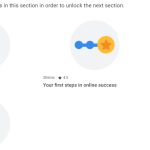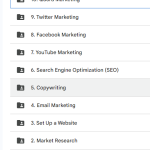In the rapidly evolving world of artificial intelligence, Google has established itself as a pioneer with its advanced AI chatbot solutions. Leveraging its vast expertise in machine learning and natural language processing, Google has developed AI chatbots that set the benchmark for conversational technology. This article delves into what the Google AI chatbot is, its standout features, and how it enhances user interactions across various platforms.
What is Google AI Chatbot?
The Google AI chatbot represents Google’s foray into conversational AI, aimed at delivering high-quality, automated interactions across diverse applications. Powered by Google’s cutting-edge technologies, including natural language understanding (NLU) and machine learning, the Google AI chatbot is designed to facilitate meaningful conversations, enhance user experiences, and provide valuable insights. It integrates seamlessly with Google’s suite of products and services, offering a robust solution for businesses and developers.
Key Features of Google AI Chatbot
1. Natural Language Understanding (NLU)
A. Advanced Language Processing
- Contextual Understanding: Google AI chatbots excel at understanding the context of conversations. They analyze user inputs in real-time to deliver relevant and coherent responses.
- Entity Recognition: They can identify and process specific entities within a conversation, such as names, dates, and locations, to provide more accurate answers.
B. Language Models
- Transformers and BERT: Utilizing Google’s proprietary models like Transformers and BERT, the chatbot can understand and generate human-like text, improving the quality of interactions and responses.
2. Integration with Google Services
A. Google Workspace Integration
- Seamless Collaboration: Google AI chatbots integrate with Google Workspace (formerly G Suite), enhancing productivity by automating tasks such as scheduling meetings, sending emails, and managing calendars.
- Google Calendar and Gmail: Users can interact with their Google Calendar and Gmail directly through the chatbot, making it easier to manage appointments and communication.
B. Google Cloud Platform
- Scalability and Reliability: Leveraging Google Cloud Platform, the AI chatbot benefits from robust infrastructure, ensuring scalability, reliability, and high performance across various use cases.
3. Machine Learning and Continuous Improvement
A. Learning Capabilities
- Adaptive Learning: The chatbot continually learns from interactions, improving its responses over time. Machine learning algorithms enable it to adapt to new queries and contexts.
- Feedback Integration: User feedback and interaction data are used to refine and enhance the chatbot’s performance, making it increasingly accurate and efficient.
B. Personalization
- Tailored Interactions: By analyzing user preferences and historical interactions, the chatbot can provide personalized responses and recommendations, enhancing the overall user experience.
4. Multilingual Support
A. Global Reach
- Language Diversity: Google AI chatbots support multiple languages, allowing businesses to reach and engage with a global audience. This multilingual capability ensures effective communication across different regions and cultures.
B. Language Translation
- Real-Time Translation: Built-in translation features enable seamless conversations between users speaking different languages, breaking down language barriers and facilitating smoother interactions.
5. Natural and Engaging Conversations
A. Conversational Flow
- Human-Like Interactions: The chatbot is designed to mimic human conversational patterns, making interactions feel more natural and engaging. It handles complex queries and provides thoughtful responses.
- Context Retention: It maintains context throughout conversations, allowing for more meaningful and coherent exchanges with users.
B. Interactive Features
- Rich Media: Google AI chatbots can incorporate rich media elements such as images, videos, and carousels into conversations, making interactions more dynamic and informative.
6. Integration with Third-Party Services
A. API Connectivity
- Custom Integrations: Google AI chatbots offer integration capabilities through APIs, enabling them to connect with various third-party applications and services. This flexibility allows businesses to customize the chatbot’s functionality according to their needs.
- Service Automation: Integration with other services enables automation of routine tasks such as order processing, customer support, and data retrieval.
B. Platform Support
- Versatile Deployment: The chatbot can be deployed across various platforms, including websites, mobile apps, and messaging platforms, providing a consistent experience regardless of the medium.
7. Security and Privacy
A. Data Protection
- Encryption: Google AI chatbots employ robust encryption protocols to safeguard user data and conversations, ensuring privacy and security.
- Compliance: They adhere to industry standards and regulations, such as GDPR and CCPA, to protect user information and maintain trust.
B. Access Controls
- Permission Management: Businesses can set access controls and permissions to manage who can interact with the chatbot and what data can be accessed, enhancing security and control.
8. Analytics and Insights
A. Performance Tracking
- Analytics Dashboard: Google AI chatbots provide detailed analytics and reporting features, allowing businesses to track performance metrics such as user engagement, conversation volume, and response accuracy.
- Insights Generation: The analytics tools generate insights that help businesses understand user behavior, identify trends, and make data-driven decisions to optimize chatbot performance.
B. Usage Metrics
- Interaction Metrics: Businesses can monitor metrics such as the number of interactions, average response times, and user satisfaction ratings to assess the chatbot’s effectiveness and make necessary adjustments.
Conclusion
The Google AI chatbot represents a significant advancement in conversational AI, combining cutting-edge natural language processing, machine learning, and seamless integration with Google’s ecosystem. Its powerful features, including contextual understanding, multilingual support, and personalized interactions, make it a valuable tool for enhancing customer engagement, automating tasks, and driving business efficiency. By leveraging Google’s robust infrastructure and advanced technology, businesses can deploy AI chatbots that provide high-quality interactions, valuable insights, and a superior user experience. As AI continues to evolve, Google’s chatbot solutions are poised to play a pivotal role in shaping the future of digital communication.






Add Comment